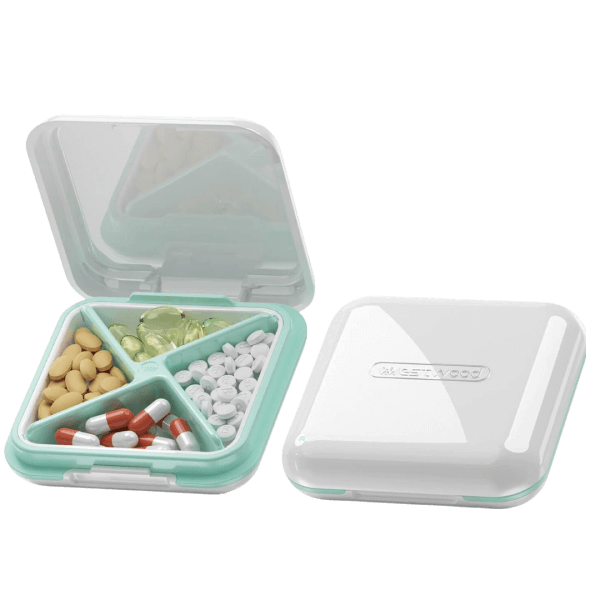
The History and Importance of National Women’s Health Care Month
-
- Established in 1984 by the U.S. Department of Health and Human Services, Office on Women’s Health
-
- Aimed at encouraging women to prioritize their health, seek regular screenings, and engage in healthy lifestyle choices
-
- Highlights the importance of understanding and addressing gender-specific health issues
Leading Health-Related Causes of Death and Morbidity Among Women
Heart Disease
The leading cause of death for women in the United States is,, heart disease. There are several important risk factors that contribute to this, including high blood pressure, high cholesterol, smoking, obesity, diabetes, and a family history of heart disease. It is crucial to note that women may experience different symptoms of heart disease compared to men. These symptoms can include shortness of breath, nausea, and pain in the back or jaw. Understanding these risk factors and being aware of the unique symptoms women may experience are essential steps in managing and preventing heart disease.Recommended Screenings for Heart Disease in Women
-
- Blood pressure: Have your blood pressure checked at least every two years, starting at age 18
-
- Cholesterol: Get a lipid panel, which includes total cholesterol, LDL, HDL, and triglycerides, every four to six years, starting at age 20
-
- Blood glucose: Screen for diabetes with a fasting blood glucose test or a hemoglobin A1c test, beginning at age 45 or earlier if you have risk factors for diabetes
Additional Screening Tests
-
- Electrocardiogram (EKG): Measures the electrical activity of the heart and helps detect heart abnormalities
-
- Stress test: Evaluates how well the heart works during physical activity, often performed with an EKG
-
- Echocardiogram: A non-invasive ultrasound test that provides detailed images of the heart’s structure and function
Diet and Exercise Recommendations
-
- Diet: ,,Adopt a heart-healthy diet rich in fruits, vegetables, whole grains, lean proteins, and healthy fats (such as avocados, nuts, and olive oil). Limit saturated and trans fats, added sugars, and sodium.
-
- ,,Exercise: Aim for at least 150 minutes of moderate-intensity aerobic activity or 75 minutes of vigorous-intensity aerobic activity each week, combined with muscle-strengthening exercises on two or more days per week.
-
- Weight management: Strive for a healthy weight to help reduce the risk of heart disease. A balanced diet and regular exercise are key components of weight management.
-
- Smoking cessation: Quit smoking, as it is a major risk factor for heart disease. Seek support from healthcare professionals, friends, and family to help you quit.
Leading Health-Related Causes of Death and Morbidity Among Women
ancer
Breast cancer ranks as the most prevalent cancer among women, with lung and colorectal cancers following closely behind. To ensure successful treatment, it is imperative to prioritize regular screenings and early detection. Additionally, adopting lifestyle changes, such as maintaining a healthy weight, engaging in regular physical activity, and moderating alcohol intake, can significantly lower the risk of developing cancerBreast Cancer
-
- Statistical data: About 1 in 8 U.S. women (approximately 13%) will develop invasive breast cancer over the course of her lifetime.
-
- Likely causes: Hormonal factors, personal and family history, age, reproductive history, and certain gene mutations.
-
- Hereditary factors: BRCA1 and BRCA2 gene mutations increase the risk of breast and ovarian cancers; family history of breast cancer in a first-degree relative (mother, sister, or daughter) also increases risks.
-
- Screening for high-risk individuals: Women with a strong family history or known genetic mutations may start screening at a younger age, undergo more frequent screenings, and consider additional tests like breast MRI.
Lung Cancer
-
- Among women, lung cancer is the second most common cancer and the leading cause of cancer-related death.
-
- Routine screening guidelines: Low-dose CT scans are recommended annually for women aged 55-80 with a 30-pack-year smoking history, who currently smoke or have quit within the past 15 years.
-
- Signs and symptoms: Persistent cough, shortness of breath, chest pain, hoarseness, weight loss, and recurrent respiratory infections.
-
- Lifestyle changes: Quitting smoking is the most effective way to prevent lung cancer; avoid exposure to secondhand smoke, radon, and other carcinogens; maintain a healthy diet and exercise regularly
Colorectal Cancer
-
- The third most common cancer among women in the US.
-
- Routine screening guidelines: Begin screening at age 45 with one of the following options: a colonoscopy every 10 years, a sigmoidoscopy every 5 years, or an annual fecal occult blood test (FOBT) or fecal immunochemical test (FIT).
-
- Signs and symptoms: Changes in bowel habits, rectal bleeding, abdominal pain, unexplained weight loss, and fatigue.
-
- Lifestyle changes: Maintain a healthy weight; engage in regular physical activity; consume a diet high in fruits, vegetables, and whole grains; limit alcohol intake; and avoid tobacco products.
Leading Health-Related Causes of Death and Morbidity Among Women
Stroke
,,Stroke is a leading cause of disability and the third leading cause of death for women in the United States. Each year, nearly 800,000 people in the US experience a stroke, with approximately 55,000 more women than men affected by this condition annually. Significant risk factors contributing to the incidence of stroke include high blood pressure, high cholesterol, smoking, obesity, and diabetes.Signs and Symptoms
-
- Remember the acronym FAST to recognize the signs of a stroke:F – Face: Ask the person to smile; check if one side of the face droops A-Arms: Ask the person to raise both arms; see if one arm drifts downward S – Speech: Ask the person to repeat a simple phrase; listen for slurred or strange speech T – Time: If any of these signs are present, call 911 immediately.
Reducing Risks and Prevention
-
- Manage blood pressure: Aim to keep your blood pressure within a healthy range (below 120/80 mm Hg); regular check-ups, medication, a low-sodium diet, and exercise can help control blood pressure.
-
- Control cholesterol: Maintain healthy cholesterol levels by consuming a diet low in saturated and trans fats, exercising regularly, and taking medication if prescribed.
-
- Maintain a healthy weight: Obesity increases the risk of stroke; a balanced diet and regular exercise can help you achieve and maintain a healthy weight.
-
- Exercise regularly: Engage in at least 150 minutes of moderate-intensity aerobic activity or 75 minutes of vigorous-intensity aerobic activity each week, combined with muscle-strengthening exercises on two or more days per week.
-
- Eat a balanced diet: Consume a diet rich in fruits, vegetables, whole grains, lean proteins, and healthy fats, while limiting processed foods and added sugars.
-
- Quit smoking: Smoking increases the risk of stroke; seek support from healthcare professionals, friends, and family to help you quit.
-
- Limit alcohol intake: Drink alcohol in moderation, if at all; women should consume no more than one drink per day.
-
- Manage diabetes: Keep blood sugar levels under control through medication, diet, and exercise.
Reproductive Health and Cancer Awareness
Reproductive Health
Regular gynecological check-ups and Pap tests play a vital role in detecting and preventing cervical cancer. Additionally, access to contraception and comprehensive sexual education is crucial for promoting reproductive health and preventing unintended pregnancies. Ensuring women have the necessary resources and knowledge to manage their reproductive health is key to their overall well-being.Annual Gynecological Exams
-
- Women should start having annual gynecological exams around age 21 or when they become sexually active, whichever comes first.
-
- These exams may include a general physical exam, breast exam, and pelvic exam, depending on the individual’s needs and concerns.
Pap Smears and HPV Testing
-
- ,,Pap smears are recommended every three years for women aged 21-29.
-
- For women aged 30-65, Pap smears every three years or combined Pap smear and HPV testing every five years is recommended.
-
- Women over 65 with a history of normal Pap test results and no history of cervical cancer or precancerous conditions may discontinue Pap testing.
HPV Vaccination Recommendations
-
- The ,,HPV vaccine is recommended for girls and boys aged 11-12, with catch-up vaccinations for those aged 13-26 who have not been previously vaccinated.
-
- The vaccine protects against the most common types of HPV that cause cervical cancer and genital warts.
Gynecological Cancers
Ovarian Cancer
-
- Symptoms: Abdominal or pelvic pain, bloating, feeling full quickly, increased urinary urgency or frequency.
-
- Evaluation: Consult a healthcare provider if these symptoms persist for more than a few weeks; diagnostic tests may include pelvic exams, ultrasound, or blood tests.
Cervical Cancer
-
- Symptoms: Unusual vaginal bleeding, increased vaginal discharge, pain during sex, or pain in the lower back or pelvis.
-
- Evaluation: Early stages of ,,cervical cancer often have no symptoms, making regular Pap tests and HPV screenings critical for early detection; if symptoms occur, consult a healthcare provider for further evaluation.
Uterine (Endometrial) Cancer
-
- Symptoms: Abnormal vaginal bleeding or discharge, pelvic pain, pain during sex, or unintended weight loss.
-
- Evaluation: If symptoms are present, consult a healthcare provider; diagnostic tests may include a pelvic exam, ultrasound, or endometrial biopsy.
Screening for Sexually Transmitted Diseases (STDs)
-
- ,,Routine screening for STDs is essential for maintaining reproductive health, as many STDs can be asymptomatic or have mild symptoms that are easily overlooked.
-
- Specific screening guidelines vary depending on age, sexual activity, and risk factors.
-
- Generally, all sexually active women under the age of 25 should be screened annually for chlamydia and gonorrhea.
-
- Women aged 25 and older with risk factors, such as new or multiple sex partners or a partner with an STD, should also be screened for chlamydia and gonorrhea annually.
-
- Pregnant women should be tested for syphilis, HIV, and hepatitis B during their first prenatal visit.
-
- Women at risk for HIV should be screened at least once; more frequent testing may be recommended depending on risk factors.
Vulvar Disease and Screening
-
- Vulvar diseases encompass a range of conditions that affect the external female genitalia, including infections, skin disorders, and neoplasms.
-
- Regular self-examinations can help detect abnormalities or changes in the vulvar area
-
- During annual gynecological exams, healthcare providers typically conduct a visual inspection of the vulva for signs of disease or abnormalities.
-
- If symptoms such as itching, burning, pain, or changes in the appearance of the vulva are present, consult a healthcare provider for further evaluation and appropriate treatment.














